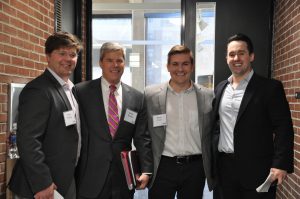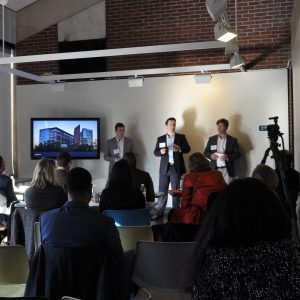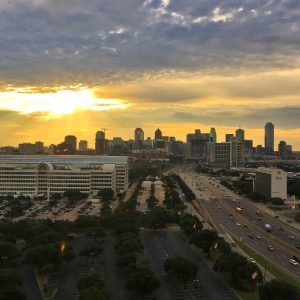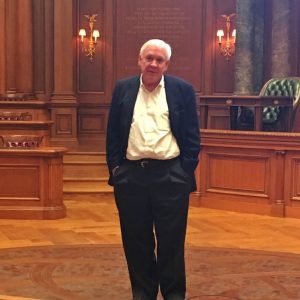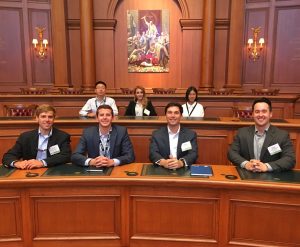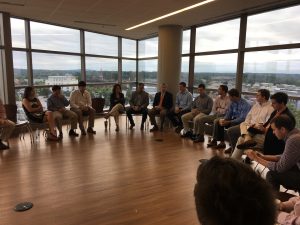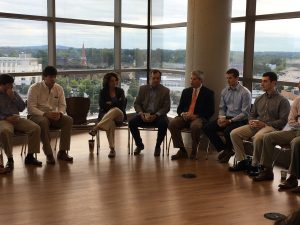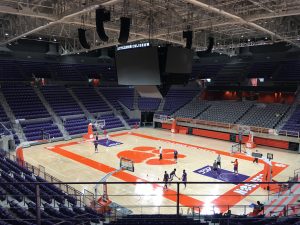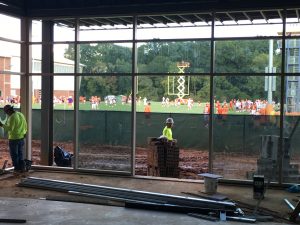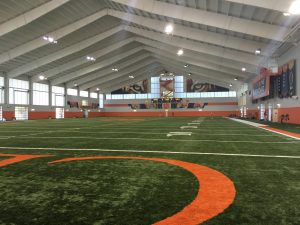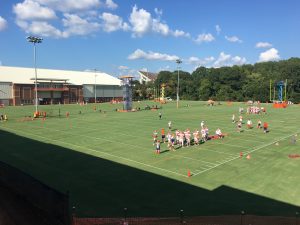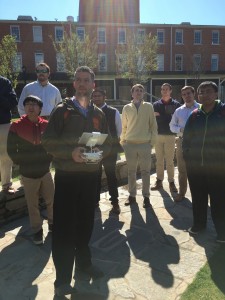The MRED student Spring 2017 Practicum Presentations were presented on Thursday, April 20 to a five panel jury. The jury consisted of Shelby Dodson (CBRE); Mary Douglas Hirsch (City of Greenville); Laurens Nicholson (Windsor Aughtry); Ryan Johnston (Upstate Business Journal); and Holly Douglas Schaumber (Douglas Development).
Three teams presented redevelopment proposals on three different comparable sites in the Village of West Greenville. Now an upcoming arts district, in the early 1900s, West Greenville was home to the textile mill “crescent.” Everything in the crescent at that time revolved around the mills, in a true live, work, play community.
The Mosaic at West Village Team included David Bivens, Vera Han, Ace Richardson, and Cliff Timmons.
Their 2.3 acre team master plan for the arts district included a two phase plan for 65 co-living apartments totaling 43,600 sqft, a 16,000 sqft market, and 12,600 sqft of retail in Phase 1. Phase 2 included additional co-working Class A office space and additional retail.
acre team master plan for the arts district included a two phase plan for 65 co-living apartments totaling 43,600 sqft, a 16,000 sqft market, and 12,600 sqft of retail in Phase 1. Phase 2 included additional co-working Class A office space and additional retail.
The Saltbox Team included Randy Clack, Wain Owings, and Scott Rogers.
Their 2.17 acre team master pla n recommended on the 1st floor: a 9,500 sqft Co-Op grocery store, 2,500 sqft GHS Primary Care physician, and 2,500 micro Bank of America branch. The 2nd floor included 15,000 sqft of office, with 15,000 sqft of an art co-work space on the 3rd floor. Their master plan also included 12 townhomes and a hostel.
n recommended on the 1st floor: a 9,500 sqft Co-Op grocery store, 2,500 sqft GHS Primary Care physician, and 2,500 micro Bank of America branch. The 2nd floor included 15,000 sqft of office, with 15,000 sqft of an art co-work space on the 3rd floor. Their master plan also included 12 townhomes and a hostel.
The Village Crossing Team included Walker Sojourner, Kaki Smith, Arthur Chen, and Gilbert Liang.
Their 2.94 acre team m aster plan recommended a mixed use development that included a 9,000 sqft community owned Co-Op grocery store, 12 apartments above ground floor retail, 15,000 sqft of class A office space, adaptive reuse creative art studios and an outdoor public space.
aster plan recommended a mixed use development that included a 9,000 sqft community owned Co-Op grocery store, 12 apartments above ground floor retail, 15,000 sqft of class A office space, adaptive reuse creative art studios and an outdoor public space.
Saltbox Development’s plan and presentation was announced the winner of the 2017 Practicum Presentations.
 MRED students in the August and December 2017 classes toured Charlotte on Friday, April 7, 2017. ABRED Director Dave Chandler of
MRED students in the August and December 2017 classes toured Charlotte on Friday, April 7, 2017. ABRED Director Dave Chandler of 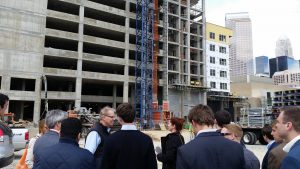 Andrew Baysden ’15 and Jim Kwasnowski of Crescent Communities ended the day’s tours with a presentation on current construction and timeline for
Andrew Baysden ’15 and Jim Kwasnowski of Crescent Communities ended the day’s tours with a presentation on current construction and timeline for 



